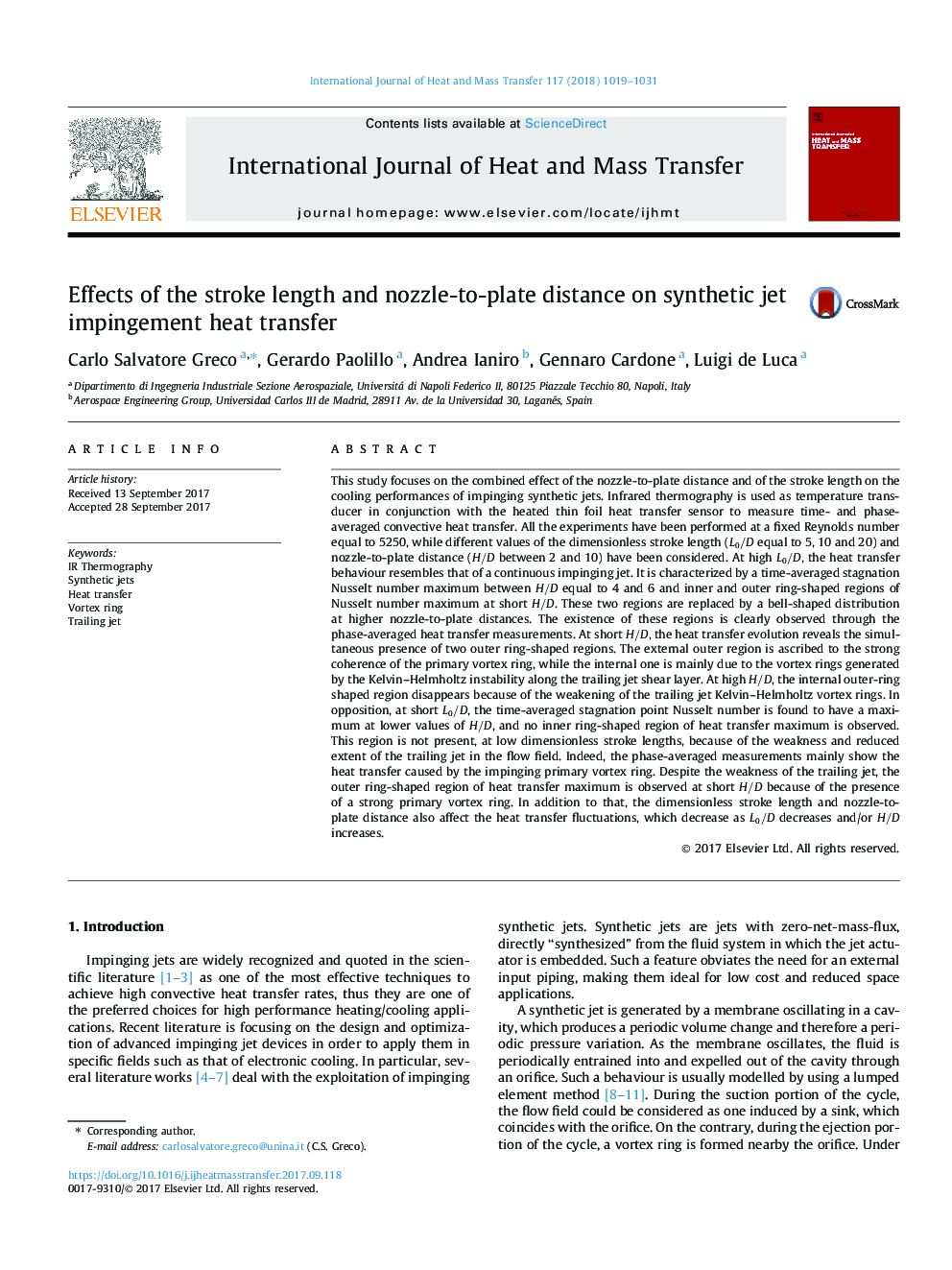| کد مقاله | کد نشریه | سال انتشار | مقاله انگلیسی | نسخه تمام متن |
|---|---|---|---|---|
| 7054857 | 1458023 | 2018 | 13 صفحه PDF | دانلود رایگان |
عنوان انگلیسی مقاله ISI
Effects of the stroke length and nozzle-to-plate distance on synthetic jet impingement heat transfer
ترجمه فارسی عنوان
اثر طول سکته مغزی و فاصله نازل به صفحه در انتقال حرارت جابجایی مصنوعی
دانلود مقاله + سفارش ترجمه
دانلود مقاله ISI انگلیسی
رایگان برای ایرانیان
کلمات کلیدی
موضوعات مرتبط
مهندسی و علوم پایه
مهندسی شیمی
جریان سیال و فرایندهای انتقال
چکیده انگلیسی
This study focuses on the combined effect of the nozzle-to-plate distance and of the stroke length on the cooling performances of impinging synthetic jets. Infrared thermography is used as temperature transducer in conjunction with the heated thin foil heat transfer sensor to measure time- and phase-averaged convective heat transfer. All the experiments have been performed at a fixed Reynolds number equal to 5250, while different values of the dimensionless stroke length (L0/D equal to 5, 10 and 20) and nozzle-to-plate distance (H/D between 2 and 10) have been considered. At high L0/D, the heat transfer behaviour resembles that of a continuous impinging jet. It is characterized by a time-averaged stagnation Nusselt number maximum between H/D equal to 4 and 6 and inner and outer ring-shaped regions of Nusselt number maximum at short H/D. These two regions are replaced by a bell-shaped distribution at higher nozzle-to-plate distances. The existence of these regions is clearly observed through the phase-averaged heat transfer measurements. At short H/D, the heat transfer evolution reveals the simultaneous presence of two outer ring-shaped regions. The external outer region is ascribed to the strong coherence of the primary vortex ring, while the internal one is mainly due to the vortex rings generated by the Kelvin-Helmholtz instability along the trailing jet shear layer. At high H/D, the internal outer-ring shaped region disappears because of the weakening of the trailing jet Kelvin-Helmholtz vortex rings. In opposition, at short L0/D, the time-averaged stagnation point Nusselt number is found to have a maximum at lower values of H/D, and no inner ring-shaped region of heat transfer maximum is observed. This region is not present, at low dimensionless stroke lengths, because of the weakness and reduced extent of the trailing jet in the flow field. Indeed, the phase-averaged measurements mainly show the heat transfer caused by the impinging primary vortex ring. Despite the weakness of the trailing jet, the outer ring-shaped region of heat transfer maximum is observed at short H/D because of the presence of a strong primary vortex ring. In addition to that, the dimensionless stroke length and nozzle-to-plate distance also affect the heat transfer fluctuations, which decrease as L0/D decreases and/or H/D increases.
ناشر
Database: Elsevier - ScienceDirect (ساینس دایرکت)
Journal: International Journal of Heat and Mass Transfer - Volume 117, February 2018, Pages 1019-1031
Journal: International Journal of Heat and Mass Transfer - Volume 117, February 2018, Pages 1019-1031
نویسندگان
Carlo Salvatore Greco, Gerardo Paolillo, Andrea Ianiro, Gennaro Cardone, Luigi de Luca,
